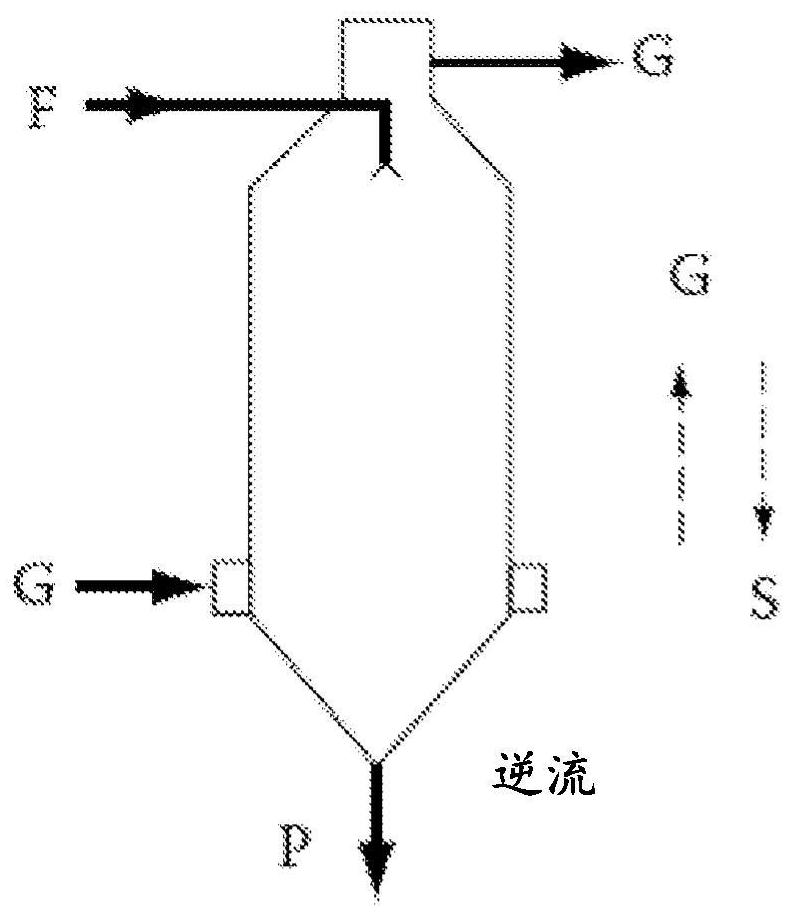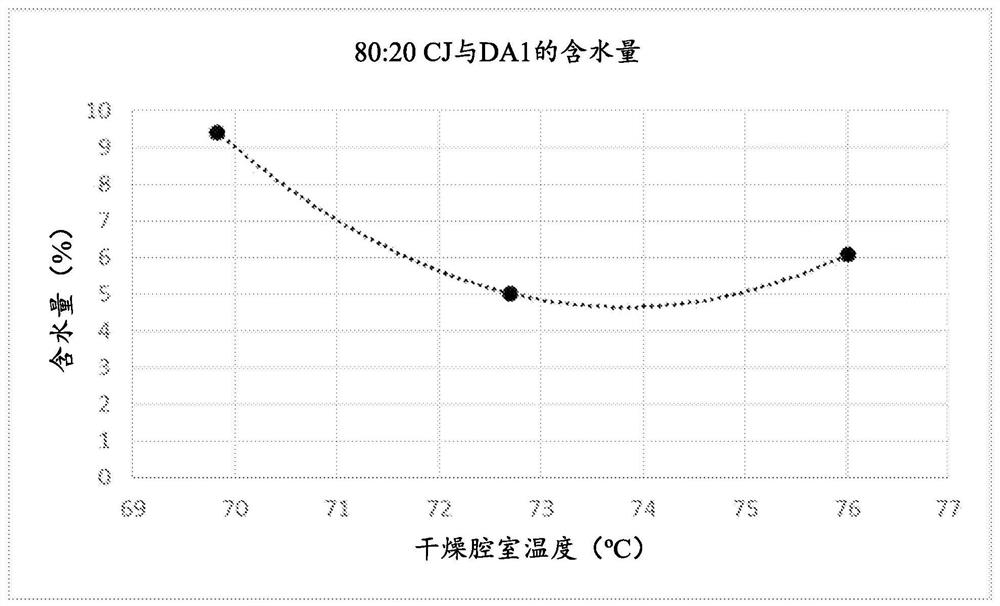Amorphous sugar composition
An amorphous, carbohydrate technology, applied in the preparation of the composition, the field of alternative sweetener compositions, can solve the problems of low glass transition temperature, reduced powder fluidity and yield, stickiness, etc.
- Summary
- Abstract
- Description
- Claims
- Application Information
AI Technical Summary
Problems solved by technology
Method used
Image
Examples
example 1
[0306] Example 1 - Spray-dried sugar cane juice and molasses with various low GI HMWCs
[0307] Solutions were prepared according to Table 1. A spray-dried solution was produced at a ratio of 1 g of HMWC to 1 g of sucrose in the form of molasses or sugar cane juice. These solutions were then made to a concentration of 20% total solids and sprayed in 400 or 500 ml quantities.
[0308] Table 1 - Spray Dried Solutions
[0309]
[0310]
[0311] *These solutions dissolve completely but form suspensions after overnight refrigeration.
[0312] The dextrins used were digesta-resistant dextrin derivatives.
[0313] Table 2 - Spray Drying of Solutions of Table 1
[0314] Each solution was filtered prior to spray drying. The preferred method is stocking filtration.
[0315] Numbering Gun temperature top temperature bottom temperature Feed pressure powder 1 260 193 80 1.1psi 50% liquid 2 260 200 93 1.5psi 75% liquid 3 158 80 n...
example 2
[0322] Example 2 - Analysis of polyphenol content in amorphous sugar, cane juice or molasses
[0323] Accurately weigh 40g of sample into a 100ml volumetric flask. About 40 ml of distilled water was added and the flask was stirred until the sample was completely dissolved, after which time the solution was made up to the final volume with distilled water. Polyphenol analysis is based on the Folin-Ciocalteu method. Briefly, 50 μL aliquots of appropriately diluted raw sugar solutions were added to test tubes, followed by 650 μL of distilled water. A 50 μL aliquot of Folin-Ciocalteu reagent was added to the mixture and shaken. After 5 min, add 500 μL of 7% Na with mixing 2 CO 3 solution. Absorbance at 750 nm was recorded after 90 min at room temperature. A standard curve was drawn using standard solutions of catechins (0-250 mg / L). Sample results are expressed as mg of catechin equivalent (CE) per 100 g of original sample. The absorbance of each sample sugar was determine...
example 3
[0326] Example 3 - Analysis of reducing sugar content in amorphous sugar, sugar cane juice or molasses
[0327] There are several qualitative tests that can be used to determine the amount of reducing sugars in a sample. Copper(II) ions in aqueous sodium citrate or aqueous sodium tartrate can react with the sample. Reducing sugars convert copper(II) to copper(I), which forms quantifiable precipitates of copper(I) oxide.
[0328] An alternative is to react 3,5-dinitrosalicylic acid with the sample. A reducing sugar will react with this reagent to form 3-amino-5-nitrosalicylic acid. The amount of 3-amino-5-nitrosalicylic acid can be measured spectrophotometrically and the results used to quantify the amount of reducing sugars present in the sample.
PUM
| Property | Measurement | Unit |
|---|---|---|
| diameter | aaaaa | aaaaa |
| density | aaaaa | aaaaa |
| density | aaaaa | aaaaa |
Abstract
Description
Claims
Application Information
 Login to View More
Login to View More - R&D
- Intellectual Property
- Life Sciences
- Materials
- Tech Scout
- Unparalleled Data Quality
- Higher Quality Content
- 60% Fewer Hallucinations
Browse by: Latest US Patents, China's latest patents, Technical Efficacy Thesaurus, Application Domain, Technology Topic, Popular Technical Reports.
© 2025 PatSnap. All rights reserved.Legal|Privacy policy|Modern Slavery Act Transparency Statement|Sitemap|About US| Contact US: help@patsnap.com



